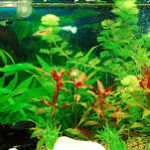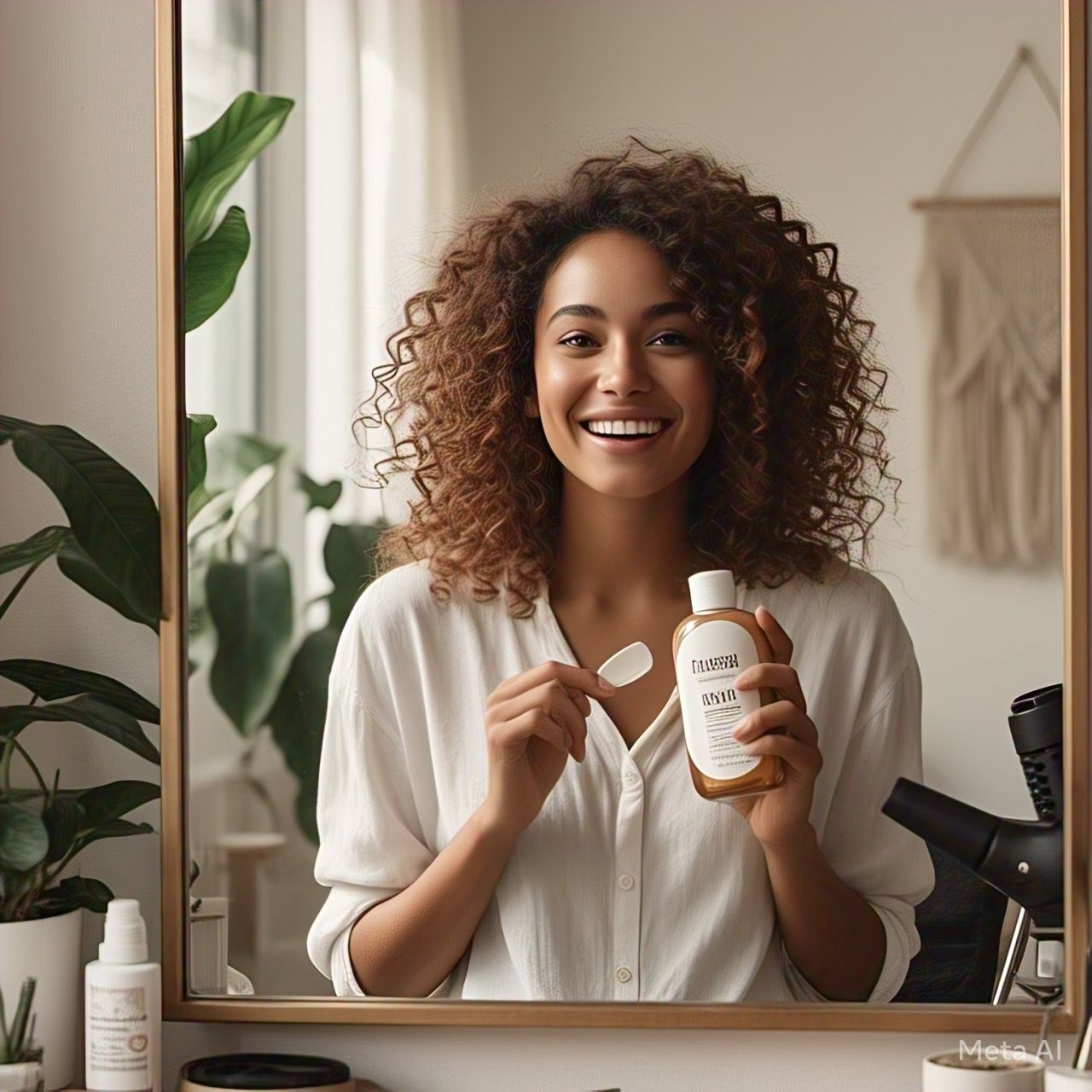Understanding the Importance of Leave-In Conditioners for Dry, Brittle Hair
Dry and brittle hair can affect anyone, regardless of hair type, lifestyle, or climate. It often appears dull, feels rough to the touch, and breaks easily. For many individuals, these symptoms become a constant battle. While regular conditioners offer temporary relief during washing, leave-in conditioners step in to provide long-lasting hydration and repair. These products are specially designed to stay in the hair after washing, offering extended nourishment throughout the day. This part of the article explores why leave-in conditioners are essential in combating dryness and brittleness and how they differ from traditional hair care solutions.
The Causes Behind Dry and Brittle Hair
Understanding what causes hair to become dry and brittle is the first step toward finding the right remedy. A variety of factors can contribute to this condition. Environmental influences such as excessive sun exposure, wind, and pollution can rob hair of its natural moisture. Heat styling tools like straighteners, curling irons, and blow dryers are also culprits, damaging the hair shaft over time. Additionally, chemical treatments, including dyes, perms, and relaxers, weaken the hair structure, making it more susceptible to breakage.
Another factor is the hair care routine itself. Washing hair too frequently can strip away natural oils that are essential for moisture retention. Using harsh shampoos or skipping conditioner can exacerbate the problem. Even the quality of water—whether it is hard or soft—can play a role in hair health. Genetics also influence hair texture and resilience, with some individuals naturally prone to dryness.
The Role of Leave-In Conditioners in Hair Recovery
Leave-in conditioners are formulated to counteract the damage and dryness caused by daily stressors. Unlike rinse-out conditioners that are used briefly in the shower, leave-ins are applied to damp hair and left in without rinsing. This continuous presence allows them to hydrate, soften, and strengthen the hair throughout the day.
These products often contain a blend of humectants, emollients, and proteins that work together to improve the hair’s moisture balance and elasticity. Humectants attract moisture from the environment, emollients smooth the hair’s surface, and proteins help rebuild the hair shaft. When used consistently, leave-in conditioners create a protective barrier that guards against future damage while restoring the hair’s natural shine and texture.
Differences Between Leave-In and Traditional Conditioners
Many people confuse leave-in conditioners with traditional conditioners, but the two serve distinct purposes. Traditional conditioners are designed to detangle and moisturize the hair temporarily during the washing process. They are rinsed out after a few minutes, meaning their effects do not last long after the shower. Leave-in conditioners, however, are specifically created to provide ongoing benefits.
Leave-in products are typically lighter in texture, allowing them to be applied without weighing down the hair. They are ideal for daily use and are especially beneficial for individuals with curly, coily, or damaged hair types. These conditioners offer styling support, reduce frizz, and make detangling easier, all while enhancing overall hair health.
The Science Behind Leave-In Formulations
Formulating a good leave-in conditioner involves a balance of ingredients that target various aspects of hair health. Water is usually the base, acting as the initial source of moisture. Humectants like glycerin or panthenol draw moisture into the hair shaft. Oils and butters, such as argan oil, shea butter, or coconut oil, provide nourishment and seal in hydration. Proteins such as keratin or silk amino acids strengthen the hair and improve elasticity.
Silicones are also common in many leave-ins, offering smoothness and shine. However, some consumers prefer silicone-free formulas due to concerns about buildup. In response, many brands have developed lightweight, botanical-based leave-in conditioners that cater to those seeking natural alternatives. These newer formulas often rely on plant extracts, essential oils, and herbal infusions to deliver results without synthetic additives.
Signs That Hair Needs a Leave-In Conditioner
Identifying when the hair needs extra care is crucial in selecting the right product. If the hair feels rough, looks frizzy, or tangles easily, it may be lacking sufficient moisture. Breakage, split ends, and a general lack of shine also indicate the need for added hydration and repair. Individuals who frequently color, straighten, or perm their hair are especially prone to these issues.
Leave-in conditioners offer a proactive way to address these symptoms. They allow for targeted application to the areas that need the most attention, such as the ends or mid-lengths. Unlike heavier treatments or masks, leave-in products can be incorporated into a daily routine with minimal effort, making them a practical choice for ongoing maintenance.
Choosing the Right Leave-In Conditioner Based on Hair Type
Different hair types have different needs, and not all leave-in conditioners are created equal. Fine hair may require a lightweight, water-based formula that adds moisture without flattening volume. Thick or coarse hair often benefits from richer creams or balms that offer deeper hydration. Curly and coily hair types tend to need extra emollients and curl-defining ingredients to maintain shape and reduce frizz.
Selecting the appropriate product involves understanding both the hair’s natural texture and its current condition. Some leave-ins are formulated to be multifunctional, offering both moisture and styling support. Others are more specialized, focusing on strengthening, detangling, or protecting from heat. Reading ingredient labels and brand descriptions can help in making an informed decision.
Reviewing the Top Leave-In Conditioners for Dry, Brittle Hair
The world of hair care offers countless products promising nourishment, softness, and repair. Among them, leave-in conditioners stand out as effective solutions for individuals struggling with dry, brittle hair. With many brands and formulations on the market, selecting the right one can feel overwhelming. Some are designed for curly textures, while others focus on fine or color-treated strands. This part of the article dives into a detailed review of the most popular and widely recommended leave-in conditioners available today. Each product discussed has gained recognition for its ability to rescue hair from dryness and fragility, and their effectiveness varies based on texture, condition, and daily styling habits.
Exploring Lightweight Leave-Ins for Fine and Thin Hair
Fine or thin hair types often struggle with products that weigh the hair down, making it look limp or greasy. For these individuals, finding a leave-in conditioner that hydrates without compromising volume is essential. One of the top products favored by users with this hair type is a lightweight mist that provides just enough moisture to keep strands smooth without creating build-up.
A standout product in this category is a weightless conditioning spray that uses botanical extracts like green tea and chamomile. These natural ingredients soothe the scalp and nourish each strand, while also being gentle enough for daily use. The formula penetrates quickly and leaves no residue, making it ideal for those who prefer a clean, fresh finish. Many users report softer hair within days of consistent use, with a noticeable reduction in tangles and flyaways.
Another effective option for fine hair is a milk-textured leave-in treatment enriched with silk proteins and panthenol. This formula not only detangles but also adds a light coating that protects from environmental stressors. Despite its milky appearance, it absorbs swiftly and allows hair to maintain its natural movement. It is especially useful for individuals living in humid climates, as it helps prevent frizz without flattening the hair shaft.
Conditioners Designed for Curly and Coily Hair Types
Curly and coily hair tends to be naturally dry because the shape of the strand prevents oils from traveling from the scalp to the ends. As a result, leave-in conditioners for these textures must be richer and more emollient to deeply hydrate each curl. These formulas often come in cream or balm forms and feature oils, butters, and humectants that work together to lock in moisture and define curl patterns.
One product highly praised in this category is a shea butter-based leave-in conditioner that combines coconut oil, honey, and aloe vera. Together, these ingredients create a blend that sinks into the hair shaft and provides long-lasting moisture. It softens curls, defines shape, and reduces shrinkage without making the hair sticky. This leave-in is also known for being free of sulfates, parabens, and silicones, making it suitable for individuals seeking more natural care options.
Another popular choice is a leave-in that includes Jamaican black castor oil and peppermint extract. The castor oil strengthens the hair, supports growth, and prevents breakage, while the peppermint provides a refreshing sensation on the scalp. This product is particularly effective when used after washing and before styling, as it prepares the hair for manipulation and shields it from damage caused by heat or tension.
Multi-Tasking Leave-Ins for Color-Treated or Damaged Hair
Hair that has undergone chemical treatments, including bleaching, coloring, or relaxing, often requires more than simple hydration. It needs reconstruction, protection, and a gentle approach to avoid further weakening. Leave-in conditioners designed for color-treated or chemically processed hair usually include proteins, ceramides, and UV filters to repair and defend the hair’s structure.
One such leave-in conditioner that garners positive reviews is a protein-rich spray fortified with keratin and arginine. This treatment focuses on restoring elasticity and reducing split ends. Over time, it rebuilds the internal bonds of the hair and enhances its strength against future damage. Despite its reparative qualities, it remains lightweight and can be used on both damp and dry hair.
Another top performer is a cream-based product with a high concentration of natural oils like avocado and grapeseed. This formula targets brittle strands by softening the cuticle and delivering nutrients that have been lost due to dye or bleach. In addition to nourishing the hair, it also protects against fading by forming a barrier that resists environmental pollutants and UV rays. Hair that once felt stiff and rough becomes noticeably smoother and more flexible with continued application.
Natural and Clean Beauty Leave-Ins for Health-Conscious Users
In recent years, the demand for clean beauty has led to the development of leave-in conditioners made without synthetic fragrances, silicones, sulfates, or artificial preservatives. Many consumers now seek hair care products that align with their health or environmental values. These leave-ins rely on plant-based ingredients, organic oils, and herbal infusions to deliver results without compromise.
One highly rated natural leave-in conditioner features rose water, marshmallow root, and flaxseed extract. This blend creates a lightweight yet effective treatment that detangles and hydrates without chemicals. It has a subtle scent and is especially well-received by those with sensitivities or allergies. Its soothing formula also makes it suitable for use on children or individuals with irritated scalps.
Another favorite is a vegan leave-in formulated with quinoa protein, calendula, and aloe vera. This conditioner not only supports moisture retention but also encourages scalp health through anti-inflammatory ingredients. It’s packaged sustainably and is cruelty-free, appealing to consumers who value ethical production. Many users note a gradual improvement in both shine and strength when using it regularly, especially on hair that has been neglected or exposed to frequent stress.
Heat-Protectant Leave-Ins for Styling Support
For those who use heat tools regularly, a leave-in conditioner that doubles as a heat protectant offers essential defense. These dual-purpose products minimize the risk of further damage during styling while maintaining the benefits of leave-in care. They often include thermal polymers or silicones that act as shields between the hair and high temperatures.
One example is a leave-in serum that includes hydrolyzed silk and vitamin E. It is specifically engineered to resist heat damage up to 450 degrees Fahrenheit, making it suitable for blow-drying, straightening, or curling. Users praise its ability to leave hair glossy and manageable even after intensive styling sessions. The product also improves the appearance of split ends and reduces the occurrence of frizz over time.
Another product in this category is a lightweight thermal mist that blends sunflower seed extract with green tea antioxidants. This mist not only prevents heat-related dryness but also neutralizes free radicals that can age and weaken hair fibers. While it offers less moisture than a cream, it excels at maintaining hair’s integrity during daily styling routines.
User Experience and Long-Term Results
The success of a leave-in conditioner depends not only on its ingredients but also on how it interacts with the user’s hair over time. Many individuals report immediate improvements in softness, detangling ease, and shine after just one application. However, the most significant transformations tend to occur after several weeks of consistent use. Split ends appear less visible, hair becomes more elastic, and breakage slows considerably.
Consumers also appreciate products that integrate seamlessly into their existing routines. A good leave-in conditioner should not require elaborate steps to apply. Most work well when applied to towel-dried hair, either through spraying or distributing a small amount by hand. Whether air-drying or heat-styling, the right product enhances the hair’s appearance without disrupting other habits.
How to Use Leave-In Conditioners Effectively for Healthier Hair
Even the most advanced hair care products can only reach their full potential when used correctly. This is especially true for leave-in conditioners, which serve a variety of purposes depending on how they are applied. While many individuals rely on leave-in products for daily moisture or detangling, few realize how much application technique, frequency, and product pairing affect the outcome. Inconsistent usage or improper layering can prevent the conditioner from working effectively and even result in buildup or dullness over time. This part of the series explores best practices for using leave-in conditioners. It also provides a deeper understanding of how hair porosity, condition, and styling habits influence application methods and long-term success.
Understanding Hair Porosity and Why It Matters
Before applying a leave-in conditioner, it is important to understand how hair porosity affects product absorption. Hair porosity refers to how easily hair absorbs and retains moisture. Low porosity hair tends to resist moisture and is more prone to buildup, while high porosity hair absorbs moisture quickly but struggles to retain it.
For those with low porosity hair, lighter leave-ins such as sprays or milks are typically more effective. These products penetrate the hair shaft without sitting on the surface. Applying the product while the hair is still damp, and using a bit of heat—such as wrapping the head in a warm towel—can help the ingredients enter the strand more efficiently. On the other hand, individuals with high porosity hair benefit more from rich, creamy leave-in conditioners that seal in moisture. These products fill in the gaps along the hair cuticle and protect against further damage.
Medium porosity hair, which holds and releases moisture at a balanced rate, is the most adaptable. Almost any type of leave-in conditioner can work, though results still depend on the specific needs of the hair and how it is styled. Knowing one’s porosity allows for better choices not only in product selection but also in technique and timing.
The Right Time to Apply Leave-In Conditioner
Timing is another important factor that can make or break the effectiveness of a leave-in product. Many users make the mistake of applying conditioner when their hair is either too wet or already too dry. The ideal time to apply a leave-in conditioner is when the hair is damp but not dripping. At this stage, the strands are open enough to absorb product, but not so saturated that the conditioner slides off or dilutes.
After shampooing and rinsing out a regular conditioner, excess water should be gently squeezed out with a microfiber towel or cotton T-shirt. This prepares the hair to receive additional moisture and nutrients from the leave-in without interfering with its absorption. Applying leave-in conditioner at this moment ensures it acts as both a sealant and a primer for further styling steps.
In cases where the leave-in is being used for refreshing dry hair between washes, misting the hair lightly with water beforehand can help reactivate the product and prevent unnecessary heaviness. This method works particularly well for curly or coily textures that benefit from daily hydration without full washes.
Correct Techniques for Application Based on Hair Type
How the product is distributed also influences the final result. Individuals with straight or wavy hair often achieve the best outcome by applying a small amount of product from the mid-lengths to the ends. This technique avoids weighing down the roots and maintains volume. Using a wide-tooth comb or fingers to evenly spread the product ensures every strand receives coverage without overloading one section.
For curly and coily hair types, raking or praying hands techniques are often more effective. These involve spreading the leave-in between the palms and pressing it into the curls from root to tip, encouraging definition while minimizing frizz. Some prefer to section the hair into smaller parts to ensure full coverage, especially for thicker textures. This process may be more time-consuming, but it leads to a more uniform application and improved results over time.
Regardless of hair type, it’s important to avoid using excessive amounts of product. Starting with a small quantity and adding more only if needed prevents buildup and keeps the hair feeling light and clean. Those unsure of how much to use should begin with a pea-sized amount for short hair or a quarter-sized amount for longer lengths, then adjust according to thickness.
Layering with Other Hair Products Safely
Leave-in conditioners often work in harmony with other hair care products, but improper layering can create issues like flaking, greasiness, or reduced effectiveness. The order in which products are applied plays a crucial role in whether they work well together. As a general rule, lighter products go on first, followed by heavier ones. This means leave-in conditioner should usually be applied before oils, gels, or styling creams.
When using multiple products, it’s wise to choose formulas that are designed to complement each other. For instance, many brands offer complete systems where the shampoo, rinse-out conditioner, and leave-in are all part of the same line. These are formulated to work in sync and reduce the risk of ingredient clashes. However, when mixing brands, users should test combinations on a small section of hair first to avoid unwanted reactions.
Heat styling also influences how leave-ins should be layered. If the leave-in does not contain a heat protectant, it should be followed by a thermal spray or serum before using tools like blow dryers or flat irons. Skipping this step can result in moisture loss and long-term damage, especially when high temperatures are involved.
How Often Should Leave-In Conditioner Be Used
The frequency of use varies depending on hair needs, texture, and lifestyle. Some people use leave-in conditioners daily to combat dryness, especially in colder or drier climates. Others find that two to three times a week is sufficient to maintain softness and manageability.
For those with oily scalps, applying leave-in conditioner too often can lead to limp or greasy hair. In these cases, limiting use to wash days or applying only to the ends can be more beneficial. Conversely, individuals with thick, coarse, or color-treated hair may find daily application necessary to prevent brittleness.
One useful guideline is to monitor how the hair responds over time. If the hair feels sticky, coated, or starts to look dull, it may be a sign of overuse or buildup. Clarifying shampoos used once a month can reset the hair and allow leave-in products to perform better.
Mistakes to Avoid When Using Leave-In Conditioners
Even with the best products, certain habits can reduce effectiveness. Applying too much product, especially close to the scalp, can weigh the hair down and clog follicles. Using leave-in conditioners that are too rich for the hair type may result in greasiness or even increased breakage due to oversaturation.
Another mistake is skipping the rinse-out conditioner entirely and relying solely on the leave-in. While leave-in products are helpful for maintaining moisture, they are not a substitute for deep conditioning. Using both types in conjunction offers the most complete care, especially for dry or brittle hair.
Failing to read product instructions can also lead to poor results. Some leave-ins are designed to be used on wet hair only, while others are versatile enough for dry application. Paying attention to these details ensures that the product works as intended and delivers the promised benefits.
Signs That a Leave-In Conditioner Is Working
When used properly, a high-quality leave-in conditioner produces noticeable improvements in texture, strength, and shine. Hair should become easier to detangle, less prone to breakage, and more responsive to styling. Over time, split ends may appear less obvious, and frizz can be minimized even in humid conditions.
Individuals often report that their hair feels softer and appears more vibrant after just a few uses. With consistent application, the strands gain elasticity, and moisture retention improves. These benefits build gradually, making it important to stick with a routine and avoid switching products too frequently.
Long-Term Hair Care: How Leave-In Conditioners Contribute to Overall Hair Health
A well-maintained hair care routine is not just about temporary fixes or quick solutions. The goal is long-term hair health and the ability to restore, repair, and protect hair from various environmental stressors, heat damage, and styling. Leave-in conditioners play an integral role in such a routine, but they are just one part of a broader hair care strategy. In this final section, the focus shifts to how leave-in conditioners contribute to long-term hair health. This includes integrating leave-in conditioners with other hair care products, understanding when to switch products, and embracing healthy habits to prevent future damage.
Integrating Leave-In Conditioners into a Complete Hair Care Routine
Leave-in conditioners are best used in combination with other essential hair care products to achieve the healthiest results. While leave-ins hydrate and protect, they are not designed to replace shampoos, deep conditioners, or hair oils. A balanced hair care routine begins with a gentle shampoo to remove impurities and product buildup, followed by a deep conditioning treatment to restore moisture and strengthen the hair. Once these initial steps are complete, a leave-in conditioner is applied to lock in moisture and create a smooth, frizz-free finish.
Incorporating products like heat protectants, oils, or serums further elevates the benefits of a leave-in conditioner. Heat protectants are crucial for individuals who frequently use styling tools, as they prevent moisture loss and damage caused by high temperatures. Natural oils like argan, jojoba, or coconut oil help seal in moisture and add shine, while serums can control frizz and smooth the hair cuticle.
For best results, it’s important to rotate products based on seasonality and hair condition. During the colder months, for example, the hair may require heavier products due to environmental dryness. In contrast, lighter formulas may be more suitable for humid conditions to avoid weighing the hair down. Monitoring how the hair responds to changes in routine will allow for the use of the most appropriate products at any given time.
When to Switch Leave-In Conditioners: Recognizing Hair’s Changing Needs
Hair is dynamic and changes over time due to various factors such as age, climate, and overall health. What works for the hair one month may not yield the same results the next. Understanding when to switch leave-in conditioners or adjust the hair care routine is essential for maintaining healthy, vibrant strands.
For example, as hair ages, it may become drier or more prone to damage, requiring richer leave-in conditioners that provide additional moisture and repair. Alternatively, individuals with rapidly growing hair may need a lightweight leave-in conditioner that focuses on detangling and light hydration without weighing the hair down.
Changes in lifestyle can also influence hair needs. Those who exercise regularly and sweat a lot may need a clarifying shampoo more often to remove salt and chlorine buildup. Similarly, people who are exposed to pollutants or environmental toxins may benefit from products designed to protect and repair environmental damage, such as leave-in conditioners with antioxidants or UV filters.
The Role of Scalp Health in Long-Term Hair Care
A healthy scalp is the foundation for healthy hair. Without proper scalp care, even the most effective leave-in conditioners may struggle to produce results. The scalp is where hair growth begins, and it’s crucial to create an environment where hair follicles can thrive. Dry, flaky, or irritated scalps can lead to issues such as hair thinning, breakage, and dandruff. These problems often stem from insufficient moisture or imbalances in scalp oils.
Regular scalp massages, gentle cleansing, and moisturizing treatments can address these issues. For those experiencing hair thinning or a dry scalp, incorporating specialized scalp serums or oils into the routine is essential. Many leave-in conditioners now contain ingredients like tea tree oil or salicylic acid that not only hydrate but also help balance oil production and keep the scalp clear of buildup.
Using a leave-in conditioner with scalp-care benefits can enhance overall hair health, ensuring that hair follicles remain unclogged and the scalp is nourished. Furthermore, regular scalp care promotes better product absorption and encourages healthy hair growth, contributing to long-term hair vitality.
Protecting Hair from Environmental Damage
While leave-in conditioners can help protect hair from heat styling, many do not provide adequate protection against environmental damage. Ultraviolet (UV) rays, pollution, and harsh weather conditions like wind and rain can all cause harm to the hair, leading to dryness, color fading, and brittleness. For individuals who spend a lot of time outdoors or live in urban areas, environmental stressors can significantly impact hair health.
To combat this, it’s essential to incorporate hair products that offer UV protection or create a barrier against pollutants. Many leave-in conditioners now feature SPF or UV-blocking ingredients that help shield the hair from the sun’s damaging rays. Similarly, protective styling practices, such as wearing hats or scarves, can also help preserve hair from the elements.
Deep conditioning treatments with strengthening ingredients, such as keratin or biotin, can offer additional defense against environmental factors by fortifying the hair’s structure. These treatments can be incorporated into the hair care routine on a weekly or bi-weekly basis, depending on hair condition.
Building Healthy Habits for Stronger Hair
A long-term approach to hair care extends beyond products. Healthy habits play a significant role in ensuring that hair remains strong and resilient over time. Some of the most important practices include maintaining a balanced diet rich in vitamins and minerals that support hair growth, such as biotin, vitamins A, C, and E, and omega-3 fatty acids.
Additionally, avoiding excessive heat styling, harsh chemical treatments, and tight hairstyles that cause tension can prevent breakage and damage. Allowing the hair to air dry when possible or using low-heat settings on styling tools helps to minimize moisture loss and keep the hair’s natural integrity intact. When combing or brushing, using a wide-tooth comb or a detangling brush can reduce breakage, especially when the hair is wet.
Getting regular trims to remove split ends and prevent further damage is another key aspect of hair maintenance. Even if the hair is growing at a healthy rate, split ends can make it appear lifeless and frizzy, undermining the effects of leave-in conditioners.










